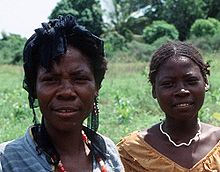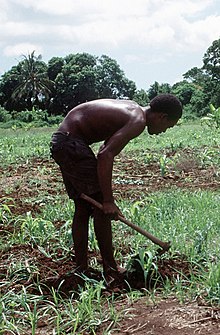
The demography of Kenya is monitored by the Kenyan National Bureau of Statistics. Kenya is a multi-ethnic state in East Africa. Its total population was at 47,558,296 as of the 2019 census.

Swahili, also known by its local name Kiswahili, is a Bantu language originally spoken by the Swahili people, who are found primarily in Tanzania, Kenya and Mozambique. The number of current Swahili speakers, be they native or second-language speakers, is estimated to be over 200 million, with Tanzania known to have most of the native speakers.

Dadaab is a semi-arid town in Garissa County, Kenya. It is the site of a UNHCR base hosting 302,805 registered refugees and asylum seekers in three camps as of 31 October 2023, making it one of the largest in the world behind Kutupalong refugee camp. The centre is run by the United Nations High Commissioner for Refugees, and its operations are financed by foreign donors. In 2013, UNHCR, the governments of Kenya and Somalia signed a tripartite agreement facilitating the repatriation of Somali refugees at the complex.

The Rendille are a Cushitic ethnic group inhabiting the Eastern Province of Kenya.
The Garre are a prominent Somali clan that traces its lineage back to Samaale, who is believed to have originated from the Arabian Peninsula through Aqiil Abu Talib. The Garre clan is considered to be a sub-clan of the Digil-Rahanweyn clan family, which is part of the larger Rahanweyn clan. However, genealogically, they are descended from Gardheere Samaale. The Garre are also categorized as southern Hawiye as well.

The Rahanweyn, also known as the Digil and Mirifle are a major Somali clan. It is one of the major Somali clans in the Horn of Africa, with a large territory in the densely populated fertile valleys of the Jubba and Shebelle rivers and the areas inbetween which are mainly inhabited by settlers from the Digil and Mirifle lineages.
The Segeju are a Bantu ethnolinguistic group mostly based in Tanzania's Tanga Region and Kenya's Kwale County. Most Segeju reside in the small coastal strip between the Tanzanian city of Tanga and the Kenyan-Tanzanian border. However, some Segeju have migrated to urban areas in other parts of Tanzania or Kenya, in hopes of better employment opportunities and quality of life. Segeju migration to urban areas often results in severance of community ties, leading to a lack of transmission of important cultural traditions and language.

The Bajuni people are a Bantu ethnic group who live primarily in the Bajuni Islands of Somalia and coastal areas between the port city of Kismayo and the city of Mombasa in Kenya. Many relocated from Somalia to Kenya due to war with the Orma, who drove them out from their ancestral territory.

The Bimaal or Bimal, is a sub-clan of the major Dir clan family. This clan is widely known for leading a resistance against the colonials in southern Somalia for decades which can be compared to the war of the Sayyid in Somaliland. The Biimaal mainly lives in southern Somalia, the Somali region of Ethiopia, which their Gaadsen sub-clan mainly inhabits and in the NEP region of Kenya.
Somali Bantus are an ethnic group from Somalia. A significant community of them reside in Maine; as of 2012, there were around 1,000 in Lewiston.
The Shirazi also known as Mbwera, are a Bantu ethnic group inhabiting the Swahili coast and the nearby Indian ocean islands. They are particularly concentrated on the islands of Zanzibar, Pemba and Comoros.
The Zigula or Zigua language, Chizigua, is a Bantu language of Tanzania, where the Mushunguli dialect is spoken. The language is also spoken in Somalia by the Somali Bantu.
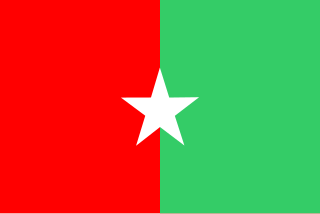
Somalis in Kenya are citizens and residents of Kenya who are of Somali ethnic descent. They have historically inhabited the North Eastern Province, previously called the Northern Frontier District, which was carved out of the Jubaland region of present-day southern Somalia during the colonial period. Following the civil war in Somalia that broke out in 1991, many Somalis sought asylum in the Somali-inhabited enclaves of Kenya. An entrepreneurial community, they established themselves in the business sector, particularly in the Nairobi suburb of Eastleigh.

The Somali slave trade existed as a part of the East African slave trade. To meet the demand for menial labor, Bantus from southeastern Africa slaves were exported from Zanzibar and were sold in cumulatively large numbers over the centuries to customers in East Africa and other areas in Northeast Africa and Asia by the somalis. Ethiopians, especially Amharas and Tigrayans were also captured and sold to traders from Arabia, India, Greece, and beyond.
Catherine Lowe Besteman is an Italian American abolitionist educator at Colby College, where she holds the Francis F. Bartlett and Ruth K. Bartlett Chair in Anthropology. Her research and practice engage the public humanities to explore abolitionist possibilities in Maine. She has taught at that institution since 1994.
Shungwaya is an origin myth of the Mijikenda peoples. Traditions known collectively as the "Shungwaya myth" describe a series of migrations of Bantu peoples dating to the 12th–17th centuries from a region to the north of the Tana River. However according to Rodger F. Morton, coastal traditions recorded prior to 1897 indicate that the Shungwaya tradition entered Mijikenda oral literature only after this date and is therefore of doubtful veracity. These Bantu migrants were held to have been speakers of Sabaki Bantu languages. Other Bantu ethnic groups, smaller in number, are also suggested to have been part of the migration. From Shungwaya, the Mount Kenya Bantu are then proposed to have broke away and migrated from there some time before the Oromo onslaught. Shungwaya appears to have been, in its heyday, a multi-ethnic settlement with extensive trade networks. Between perhaps the 12th and 15th centuries, this settlement was subjected to a full scale invasion of Cushitic speaking Oromo peoples from he Horn of Africa. From the whole corpus of these traditions, it has been argued that Shungwaya comprised a large, multi-ethnic community.
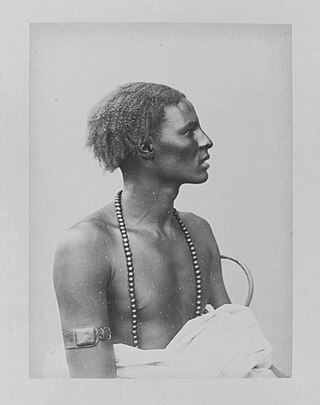
The Tomal, also known as Tumal or Tumaal, is an artisanal caste among Somali people. Their traditional hereditary occupation has been as smiths and leather production, and they have been endogamous.
The Tunni are a Somali clan that make up part of the wider Digil-Rahanweyn branch. It is one of the major clans that inhabit in the South West State of Somalia and can also be found in Jubbaland.
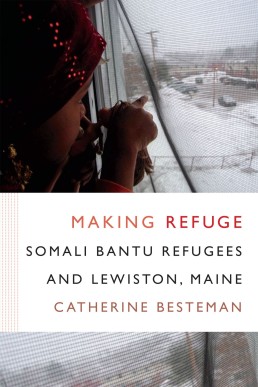
Making Refuge: Somali Bantu Refugees and Lewiston, Maine is a 2016 non-fiction book by Catherine L. Besteman, the Francis F. Bartlett and Ruth K. Bartlett Professor of Anthropology at Colby College in Waterville, Maine.

The Indian Ocean slave trade, sometimes known as the East African slave trade and part of the Arab slave trade, was multi-directional slave trade and has changed over time. Captured in raids primarily south of the Sahara, predominately black Africans were traded as slaves to the Middle East, Indian Ocean islands, Indian subcontinent, and Java. Beginning in the 16th century, they were traded to the Americas, including Caribbean colonies.
